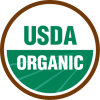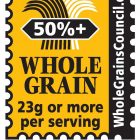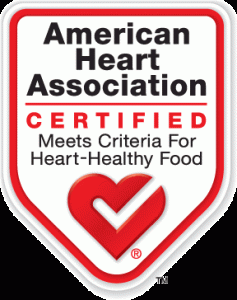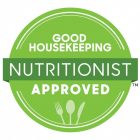News & Events
Deciphering Food Labels
Deciphering Food Labels
The best way to make healthy and safe choices is to be educated about the food that you’re eating. Navigating the grocery store aisles can be hectic these days – “Organic”, “Certified X”, “Certified Y”… Food labels are supposed to guide us to make better choices but not all labels are created equal. Here are a few to look for, and a few to be wary of.
 Organic: Certified organic food isn’t automatically better in any way than conventionally-produced food, but there are a few potential benefits to buying organic foods. Here is an in-depth analysis of the benefits and downsides of organic food by Mayo Clinic.
Organic: Certified organic food isn’t automatically better in any way than conventionally-produced food, but there are a few potential benefits to buying organic foods. Here is an in-depth analysis of the benefits and downsides of organic food by Mayo Clinic.

Whole Grain: Because there was confusion created by the food industry on what constitutes a whole grain (whether it can be refined/processed), the Whole Grains Council created a label that identifies foods that contain 50% or more whole grains. This means that foods with the stamp contain more whole grain than refined grain. Eating whole grains can reduce the risk of heart disease, Type II diabetes, colorectal cancer, and stroke. For more on whole grains go to whole grainscouncil.org.
 American Heart Association Certified: The AHA has strict requirements for foods to be certified, placing limits on sugar, and total/saturated/trans fats, and requiring sufficient amounts of dietary fiber. Foods certified by the AHA can help reduce the risk of heart disease. Look for the heart, or see the full list of certified products.
American Heart Association Certified: The AHA has strict requirements for foods to be certified, placing limits on sugar, and total/saturated/trans fats, and requiring sufficient amounts of dietary fiber. Foods certified by the AHA can help reduce the risk of heart disease. Look for the heart, or see the full list of certified products.
 Good Housekeeping Nutritionist Approved: The brand that brought you trusted products with their quality tested seal is now working to promote healthy foods. Good Housekeeping’s resident nutritionist selected foods that are smart choices in their respective categories.
Good Housekeeping Nutritionist Approved: The brand that brought you trusted products with their quality tested seal is now working to promote healthy foods. Good Housekeeping’s resident nutritionist selected foods that are smart choices in their respective categories.
Now that we’ve discussed labels to look for, here are a few that you shouldn’t take at face value.
 Multigrain: It sounds just like whole grain, but it is actually a lower standard than whole grain. Multigrain products are made with multiple kinds of grain, whereas whole grain products are made with all parts of the grain. Whole grains are the healthier choice.
Multigrain: It sounds just like whole grain, but it is actually a lower standard than whole grain. Multigrain products are made with multiple kinds of grain, whereas whole grain products are made with all parts of the grain. Whole grains are the healthier choice.
 Natural: Many products have a guarantee or seal that claims that they are all natural or 100% natural. But the term ‘natural’ is undefined by the FDA, so when a company uses it on their packaging, it carries no meaning. Look instead for specific claims of no artificial colors, sweeteners, additives, or preservatives.
Natural: Many products have a guarantee or seal that claims that they are all natural or 100% natural. But the term ‘natural’ is undefined by the FDA, so when a company uses it on their packaging, it carries no meaning. Look instead for specific claims of no artificial colors, sweeteners, additives, or preservatives.
Labels that claim reduced fat should be taken with a grain of salt because the products often contain extra other ingredients to compensate for the loss taste of the fat.Often a reduced fat product will contain more sugar, negating the effects of the reduced fat.
Overall, the easiest thing to look for is simplicity! Along with looking for the labels we discussed above, loading up on produce and buying foods with minimal preservatives and processing is a simple way to feel better about your food choices.